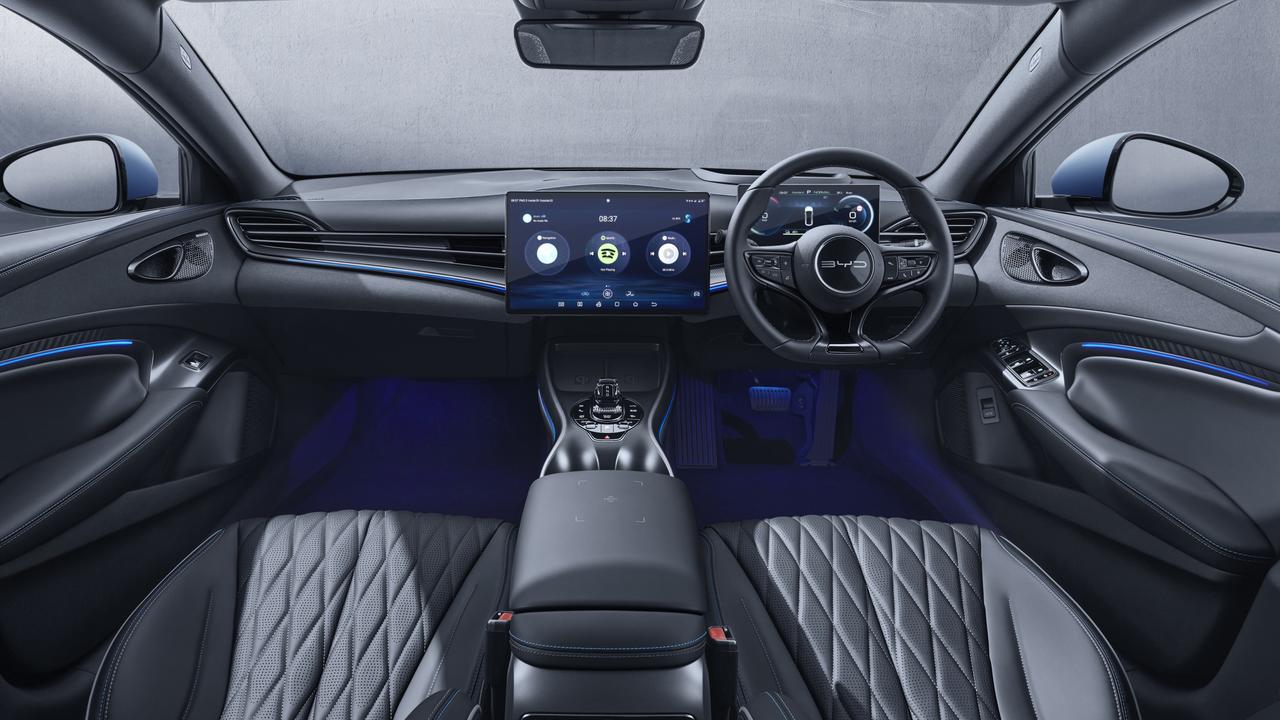BYD Seal Performance review: newcomer delivers the goods
While the car industry establishment struggles to keep pace with Tesla, a value-for-money newcomer has emerged with impressive credentials.
There are few cars that deliver more bang for your buck than BYD’s Seal Performance model.
For less than $70,000, this electric sedan will take you from a standstill to 100km/h in just 3.8 seconds.
That’s not far off the performance of German luxury sedans asking almost triple the money.
The Performance model costs $10,000 more than the Seal Premium but adds a front motor to take its combined outputs to 390kW and 670Nm.
The extra spend also buys frequency selective suspension to better control the Seal’s considerable 2.2-tonne heft.

The semi-active suspension, which recently debuted on the updated Tesla Model 3, delivers a better balance between comfort and cornering control than the standard set-up.
It essentially adjusts the amount of spring damping to suit the conditions. If you’re cruising along, it will take the edges off road imperfections to deliver a comfy ride. If it senses the car is being driven hard through corners, it will firm up the suspension to provide more control and composure.
Combined with all-wheel-drive traction and grip, the more sophisticated set-up makes the performance version a sharper weapon than the more luxury-focused Premium.
And it’s needed, because the Performance arrives at 100km/h two seconds faster than the single-motor Premium.

The Seal doesn’t deliver the brutal, neck-snapping acceleration off the mark of a performance Tesla. The engineers have clearly dulled the initial throttle response to deliver smoother takeoffs and better control accelerating out of corners.
But once you’re under way, the in-gear acceleration is mighty. Squeeze the throttle to overtake and you’re rewarded with the brute force you’d expect from a V8.
There are four driving modes to choose from: Eco, Normal, Sport and Snow. Eco prioritises efficiency to stretch the range of the car, while Sport dials up the throttle sensitivity and stiffens the suspension. You can also choose a Sport setting for the steering, which adds more weight but not a great deal more feel.

It’s not perfect, though. The brakes are identical to those on the Premium model but are asked to stop more weight potentially arriving at corners at higher speeds. They do the job for the most part, but the pedal feel doesn’t deliver the reassurance you’d like for a car of its pace and weight.
The Seal is more an express limousine than a physics-defying sports car.
Then there’s the overbearing crash-avoidance tech. The lane-keeping assistance intervenes early, noisily and forcefully, tugging at the steering wheel to pull the car back into the middle of the lane and resisting driver inputs.
The car also beeps if you stray a kilometre or two over the speed limit. You can turn the driver aids off but they reset to “on” next time you start the car.

Other carmakers, Tesla included, are able to deliver more effective and less intrusive driver aids. Hopefully there will be an over-the-air update to dial back the nannying.
Some buyers may also be disappointed by the lack of differentiation from other versions in the cabin.
The seats, trim and surface treatments are all identical to the cheaper Premium model, except for a heated steering wheel.
Having said that, the Seal’s cabin makes a Model 3 feel plain.
The rich genuine leather upholstery, the Alcantara highlights on the dash, the massive twin screens and the head-up display combine to create a luxury, hi-tech ambience that defies the price tag.

Rear-seat passengers have loads of legroom, the boot is a decent size and the front seats are snug and supportive.
Taller drivers may feel a little claustrophobic, though, as headroom isn’t generous.
The Seal Performance shares its 82kW battery with the Premium model but the extra weight of the front motor and the additional performance drop its claimed range by 50km to 520km. That’s still a decent number and the Seal can charge from 30 to 80 per cent in 26 minutes.
In short, there’s a lot to like about this feisty newcomer. As a luxurious, fast grand tourer, it takes some beating at the price.
VERDICT
Four stars
It’s not perfect but the Seal Performance is well priced, beautifully appointed and fun to drive.
BYD SEAL PERFORMANCE
PRICE About $70,000 drive-away
MOTOR Dual electric motors, 390kW and 670Nm
WARRANTY/SERVICING Six years/150,000km, $1384 for five years
SAFETY Seven airbags, auto emergency braking, lane-keep and blind-spot assist, rear cross-traffic alert with auto braking, speed warning, rear seat occupant alert, radar cruise control
RANGE 520km
SPARE Repair kit
LUGGAGE 450 litres




